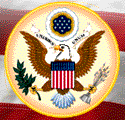 [Presidential Decision Directives - PDD]
[Presidential Decision Directives - PDD]
Over time the Presidential Directive series declined as an instrument of Clinton Administration policy-making. This decline became particularly acute in the later years of the Clinton presidency. In part this reflects the evolution of the Presidential Directive series over time. Under Presidents from Kennedy to Ford, Presidential Directives were issued on a nearly weekly basis, and in many instances were focused on short term policy iniatives. Under President Carter, the use of Presidential Directives was confined to major multi-agency policy initiatives, a precedent largely observed by subsequent administrations.PRESIDENT SERIES TOTAL ANNUAL RATE Clinton PDD 71 10 Bush NSD 79 20 Reagan NSDD 325 40 Carter PD 63 16 Nixon/Ford NSDM 348 44 Johnson/Kennedy NSAM 372 47The issuance of PDD-71 on 24 February 2000 highlighted the continued decline in use of the Presidential Directive series by President Clinton. The last well attested Presidential Directive was PDD/NSC 68 US International Information Policy (IPI) issued on 30 April 1999. Subsequently, only two Presidential Directives have been issued prior to PDD-71, suggesting a production rate of roughly a tenth that of more prolific Administrations.
There is nothing particularly unusual about the absence of information on Presidential Directives -- of the 71 issued by the Clinton Administration as of early 2000, at least 33 remained totally obscure, with no publicly available information suggesting even their subject or date of issuance. What is quite unusual is that the Clinton Administration has evidently issued only four directives [PDD-68 through PDD-71] over a period of nearly a year.
The topics and dates of PDD/NSC-69 and PDD/NSC-70 are unknown, although there are at least some possible candidates:
- Nuclear Weapons Deployment Authorization for FY 1999 and FY 2000
- FY 1999-2004 Nuclear Weapons Stockpile Plan
- Military and Veterans Health Coordinating Board 11 November 1998
- Interagency Commission on Crime and Security in US Seaports 27 April 1999
- Use of Range Facilities on Vieques and STATEMENT BY THE PRESIDENT 31 January 2000
Historically, Presidents have used the Presidential Directive series to promulgate annual nuclear weapons guidance, and some non-trivial fraction of the "missing" Clinton directives are almost certainly focused on such subjects. Prior to the issuance of PDD-71, there were at least three other candidates for policy initiatives promulgated through a Presidential Directive. The Clinton initiative establishing the Military and Veterans Health Coordinating Board on 11 November 1998 had several indicia of a possible Presidential Directive -- a multi-agency policy that was initiated by the statement "Therefore, I direct you to establish ..." But it is evident from the subsequent issuance of PDD/NSC 68 on 30 April 1999 that this veterans health initiative could not be a Presidential Directive, in the absence of an available number in the numbering sequence following PDD/NSC 67 on Encryption Policy, issued on 16 September 1998.
The initiative on Interagency Commission on Crime and Security in US Seaports of 27 April 1999 has many attributes of a Presidential Directive, in that it is a broad multi-agency policy, chartered with the formulation "Therefore, I hereby direct ..." and covering a national security issue, with the transnational threat focus so beloved of the Clinton Administration. Although the policy initiative on Vieques of 31 January 2000 is chartered with the language "I hereby direct the following..." and is concerned with a national security issue, it is not evident that the topic of the policy rises to the level of a Presidential Directive.
The obscurity of the identity of PDD-69 and PDD-70, paradoxically, highlights the publicity that has attended the promulgation of Presidential Directives in 1998 and 1999. Indeed, beginning with the issuance of PDD/NSC 56 Managing Complex Contigency Operations in May 1997, only five of the sixteen Presidential Directives remain obscure as to date and subject. This hitherto unremarked upon fact represents something of a transformation of the Presidential Directive form, with historically has been an almost entirely opaque policy instrument. By the late 1990s the Presidential Directive was largely transformed into an instrument of publicly propounding Administration initiatives addressing the trans-national security issues posed by globalization, such as cyber-security and terrorism.
This transformation must surely occaision some ambivalence. On the one hand, surely this openess represents an improvement over the largely clandestine and unaccountable decision-making that has previously been the focus of the critique of Presidential Directives. On the other hand, one presumes that the President still has a need for providing dispositive and authoritative policy guidance on multi-agency national security issues of the sort that has historically been the primary subject of Presidential Directives. It may be assumed that President Clinton, less personally engaged in national security matters than President Kennedy, would perhaps not be moved to provide personal Presidential-level guidance to some piece of the national security apparatus on a near weekly basis. But it must also be assumed that the multitudinous national security agencies continue require authoritative Presidential guidance to sort out their various inter-agency disputes. Surely the Clinton Administration continues to provide such guidance, either in the form of some informal series of un-numbered memoranda of ambiguous standing, or perhaps in the form of some entirely new and hitherto undisclosed series of numbered directives, operating the parallel with the now largely public Presidential Decision Directives.